Which Species Of Real Christmas Tree Is Best For You?
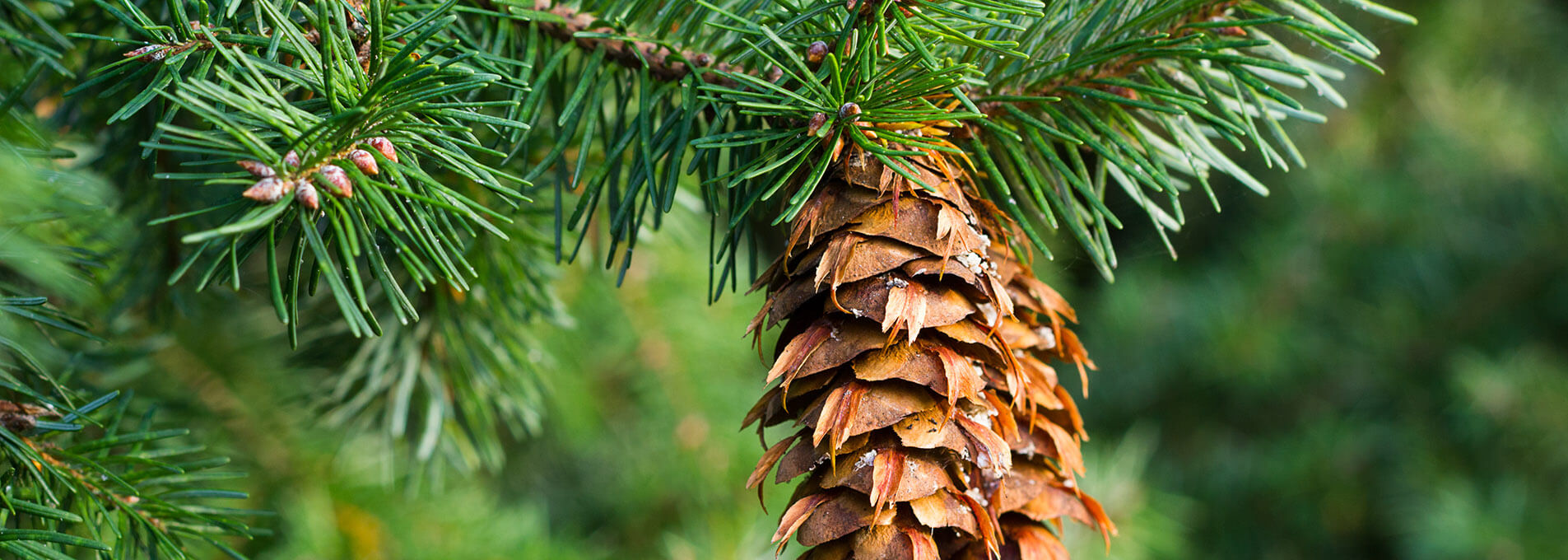
Fun for all the family to enjoy, choosing a real Christmas tree is one of our favourite things to do at this time of year and with December now upon us, there is no better time to find yours! We love nothing more than bringing the outdoors in and a real Christmas tree is the perfect opportunity to do so.
As well as filling your home with that beautiful fresh pine scent, buying a real Christmas tree can support a local farm business and they are also recyclable, making them an environmentally friendly choice too.
But with so many different tree species, which Christmas tree is best suited for your home and how do you care for them?
We’re here to help…
Nordman Fir Tree
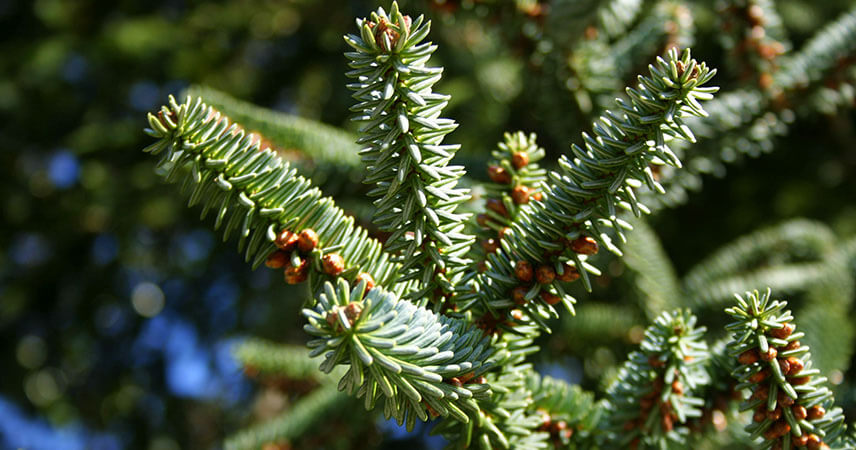
Nordman Firs are the most popular choice of Christmas tree in the UK. With its good needle retention and low maintenance, it’s the perfect choice for families and pets. The Nordman Fir has a symmetrical shape with darker green needles and spacious branches, allowing ample space for decorations to shine bright. A great all-rounder and a solid choice of Christmas tree.
Norway Spruce Tree

Norway spruces have a wonderful rich scent with lighter green needles. With a dense shape and spectacular height, It’s a great choice for outdoors as well as indoors. It does shed its needles so it may not be the best option for families with young children and pets.
Fraser Fir Tree
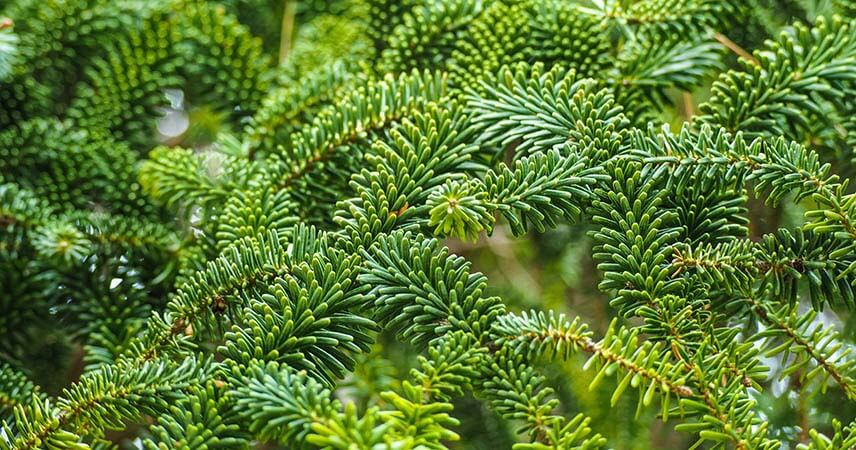
With a narrow base, the Fraser Fir is an excellent choice for tight spaces. It has a wonderful evergreen scent with strong branches, making it the perfect tree to hold lots of decorations. The needle retention is good so it’s an ideal choice for families with pets and children – a beautiful choice of Christmas tree.
Douglas Fir Tree

The Douglas Fir has a perfect pyramid shape, making it a highly desirable tree. It has a sweet citrus scent with dark blue-green needles. With wonderful fullness it really does make for a perfect Christmas tree. However, it’s important to water a Douglas Fir regularly as without it, it will shed its needles.
Blue Spruce Tree
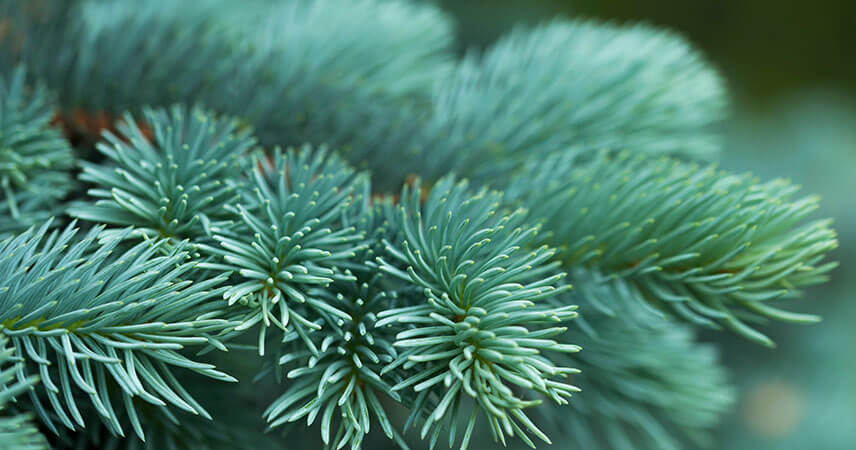
If you’re in search of something a little bit different, the Blue Spruce is a unique choice of tree. With its silver-blue colour it has a striking look and would complement a modern home beautifully. Be careful though, as although it has a good needle retention, they are sharp so it may not be suitable for families with pets and children.
Balsam Fir Tree
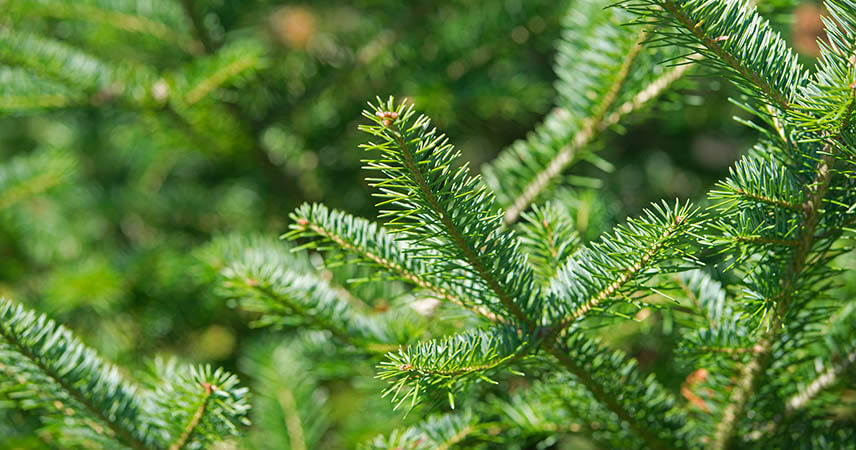
A rarity in the UK, the Balsam Fir is a traditional American tree. With a wonderful strong scent and a rich green colour, if you can get your hands on one, it’s certainly worth a consideration.
Scots Pine Tree

Less common than the more traditional tree types, Scots Pine can be found in Scotland. With a wonderful fragrance and strong branches, it’s a great choice of tree to overload with festive decorations. The needles are sharp but it has a good needle retention.
Care Tips For Your Real Christmas Tree
- The best time to purchase your real Christmas tree is in December, don’t forget that trees are living things and once they’ve been cut down, they only have a short life span. It’s always best to purchase a real tree closer to Christmas Day.
- For best results, when you get home cut the stem by 2.5 – 5cm before placing it in a stand of water.
- Choose a traditional reservoir type stand – this will provide your tree with sufficient water and help reduce the loss of needles (needle loss will always be dependant on your tree type and how well you care for it).
- Check the water supply regularly and ensure that the water always reaches the base of your tree.
- Place your tree away from any heat sources – they thrive best in colder environments.
- Don’t overload your tree with lights as these are a heat source, ensure it’s well watered and always turn the lights off when you leave your home.
- If your tree is showing signs of drying out, discard it or move it outdoors right away.
We hope you found this blog useful. If you’re sharing any festive pics of your Woodpecker floors across social media, don’t forget to tag us @wearewoodpecker.
Have a wonderful Christmas!
